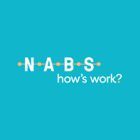
How to… Monitor and Get Help with your Well-Being When You Need It

Your well-being is central to your success at work. When your well-being is high, you can thrive. When it dips, you may find it more difficult to navigate your way through any challenges.
Many of us are naturally tuned into our physical health. We know pretty quickly when we’re feeling great – when we’re full of energy, for example – and when we’ve got an unusual ache or pain.
Our goal at NABS is to get people to a stage where they’re as naturally tuned into their overall well-being, encompassing their emotional and mental health, as well as their physical health.
In fact, we believe so strongly that you can monitor your well-being that we’ve developed a unique model, called SHEPARD. It identifies seven key elements of well-being: satisfaction, health, emotions, perceptions, awareness, rewards and diversity. We encourage people to consider where they would rank themselves within each element; the results can provide a guide to which areas of life need attention and support.
While it’s completely natural for your well-being levels to ebb and flow, you can help things along by actively monitoring how you’re feeling. That way, you can identify if and when you need help.
It’s really important to know that help is out there for you when your well-being hits a low, and that reaching out for help is a brave and important thing to do.
By the same token, well-being is something that you can work on constantly – you don’t have to wait until crisis point to ask for help. In the same way that you might go to the gym regularly to keep up your physical health, you can access ongoing forms of support to keep your well-being topped up.
Here are some of our top tips for monitoring and getting help with your well-being, wherever you’re at on the scale.
• Give yourself some space each week to check in with yourself. Get away from your desk, find some peace and ask – how am I feeling this week? How’s work?
• Check out NABS’ well-being model, SHEPARD, for an easy-to-follow guide on what thriving looks like, and to chart where you are on your well-being journey.
• Identify which activities boost your mood and then schedule them in. Making a date for well-being-enhancing activities means that you’re more likely to do them.
• Attend events, listen to podcasts or watch YouTube videos that explore the factors that make up well-being. This is a great way to keep yourself topped-up and inspired.
• If you’re struggling, reach out. Speak to your line manager, your HR rep or your workplace mental health-first aider. If you’re not comfortable speaking to someone at work, give NABS’ confidential Advice Line a call for empathetic and impartial support.
NABS offers a range of free services all focused on enhancing the well-being of everybody in our industry. To find out more, visit https://nabs.org.uk.











